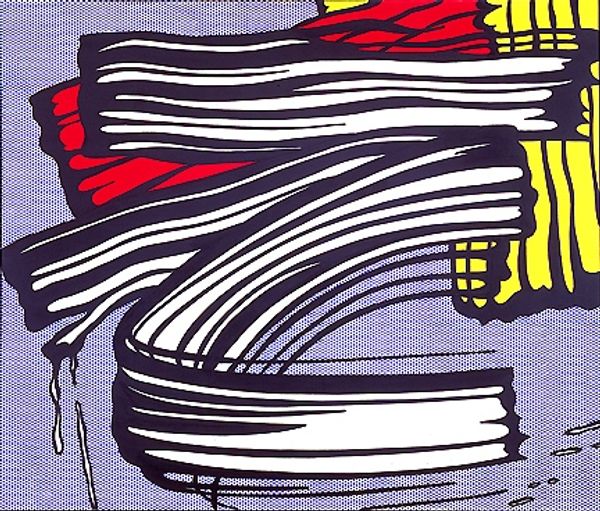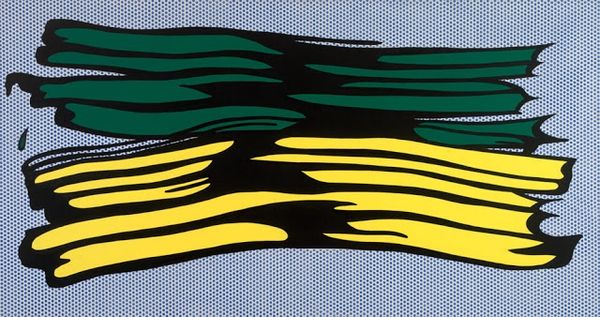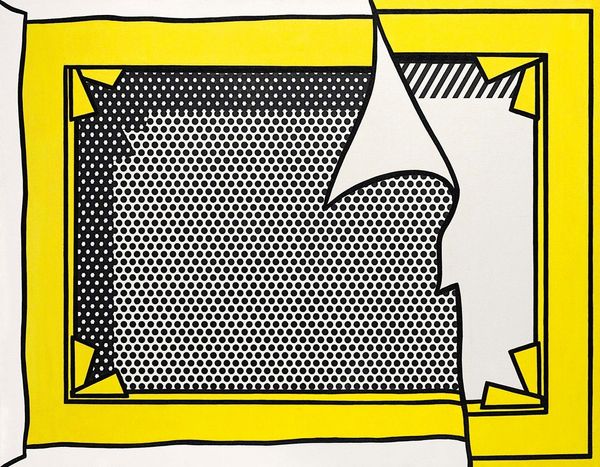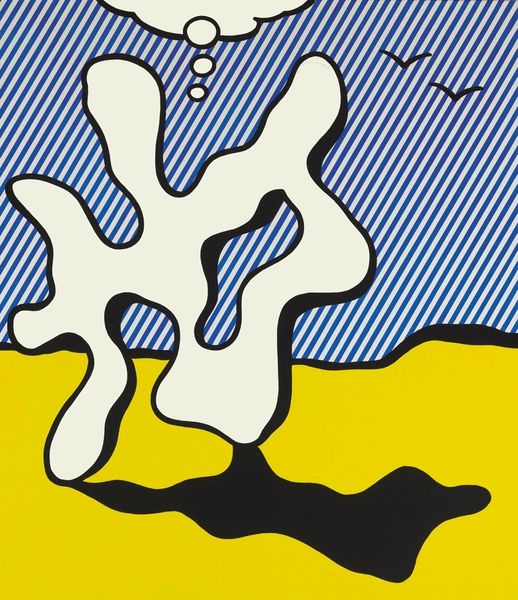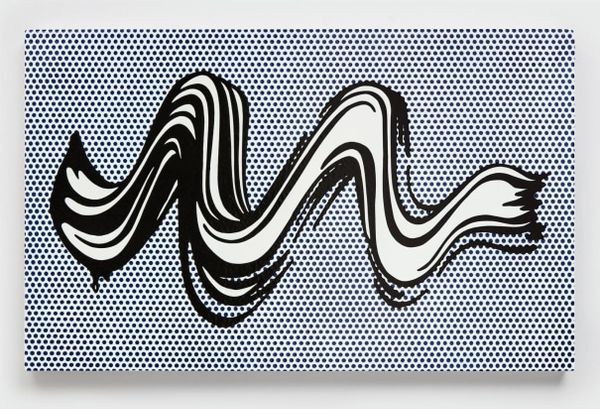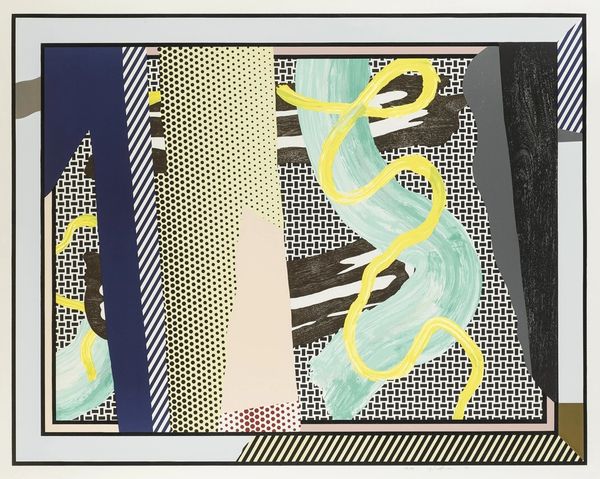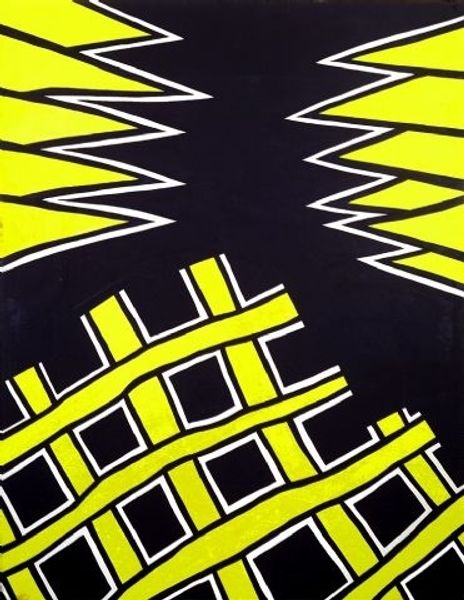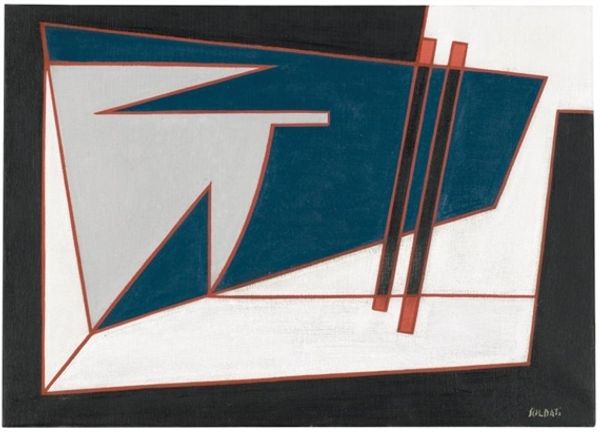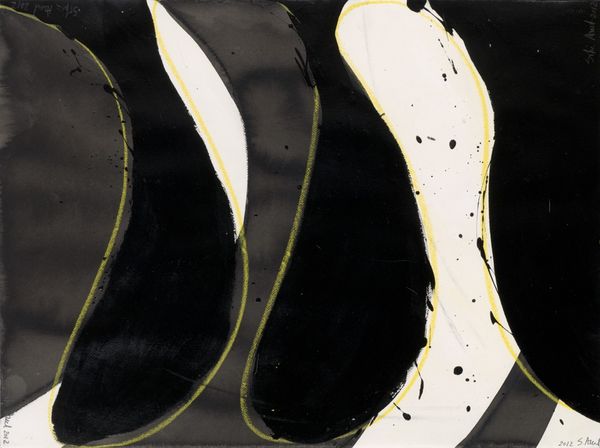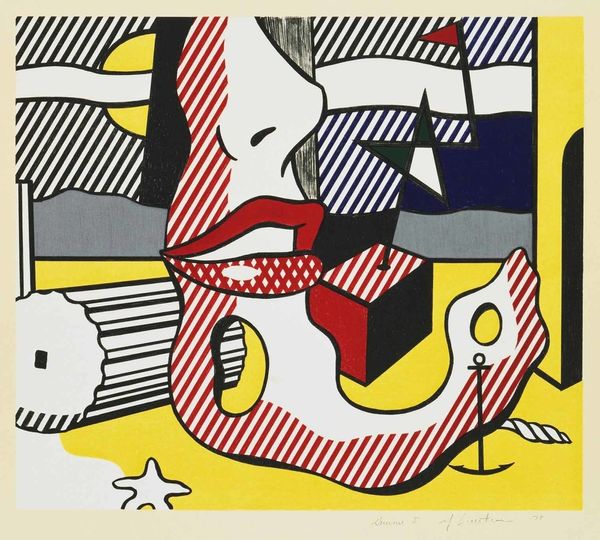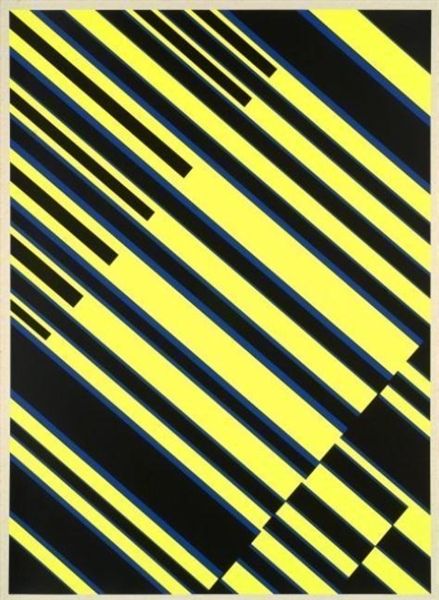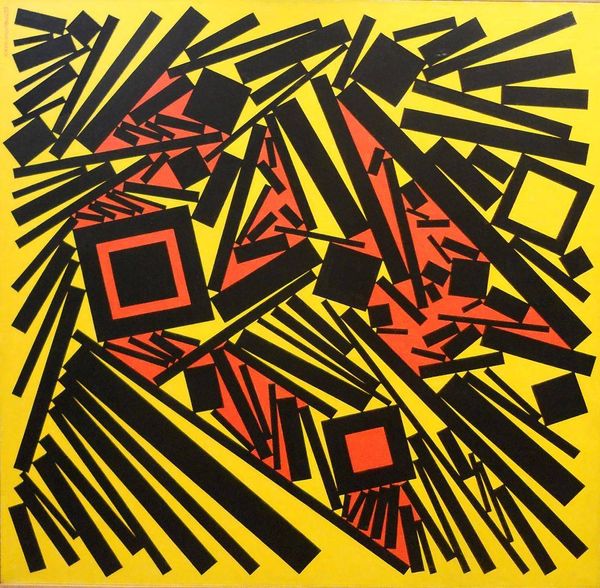
acrylic-paint
#
pop art
#
acrylic-paint
#
geometric
#
pop-art
#
line
#
modernism
Copyright: Roy Lichtenstein,Fair Use
Editor: So, this is Roy Lichtenstein's "Brushstroke" from 1965, made with acrylic paint. I find the cartoonish exaggeration really striking, like it's commenting on Abstract Expressionism in a bold, almost ironic way. What do you make of this work? Curator: Well, precisely! In the mid-60s, Lichtenstein directly confronts the established art world. The Abstract Expressionists, like Pollock and de Kooning, were celebrated for their spontaneous gestures. Lichtenstein, however, takes that gesture, the brushstroke itself, and meticulously reproduces it, using his signature Ben-Day dots, in a mechanical, almost mass-produced style. Editor: So, he's kind of poking fun at the idea of the artist's unique touch, by making it look so… artificial? Curator: Exactly. He’s questioning the cult of originality and the artist-as-genius. Consider the timing – this is a period of immense social and cultural change. Mass media is booming, consumerism is on the rise, and Lichtenstein uses those visual languages, like comic books, to challenge high art. Is he critiquing it, celebrating it, or something in between? Editor: I guess that's the interesting ambiguity of Pop Art, right? It uses the visual language of consumer culture, but it's not always clear if it's endorsing it or critiquing it. Curator: And that ambiguity is exactly what made it so controversial and so compelling. Lichtenstein's work really makes you think about the role of art in a society saturated with images. This “Brushstroke” becomes an object, a commentary on art’s changing place. Editor: It's fascinating how a seemingly simple image can hold so much cultural weight. I will definitely consider the historical and social implications when I look at other pop-art paintings. Thanks! Curator: My pleasure. Hopefully this helped you to recognize that art never exists in a vacuum. It's always in dialogue with the world around it.
Comments
No comments
Be the first to comment and join the conversation on the ultimate creative platform.
